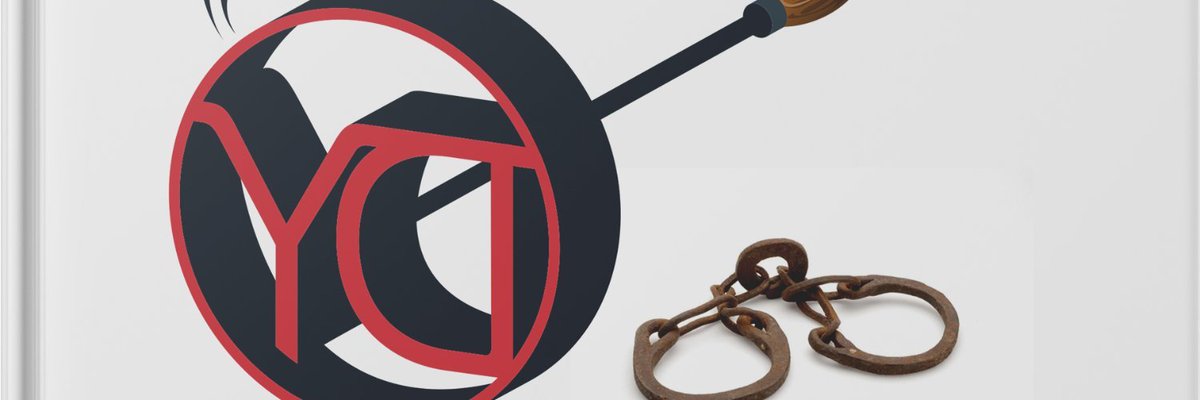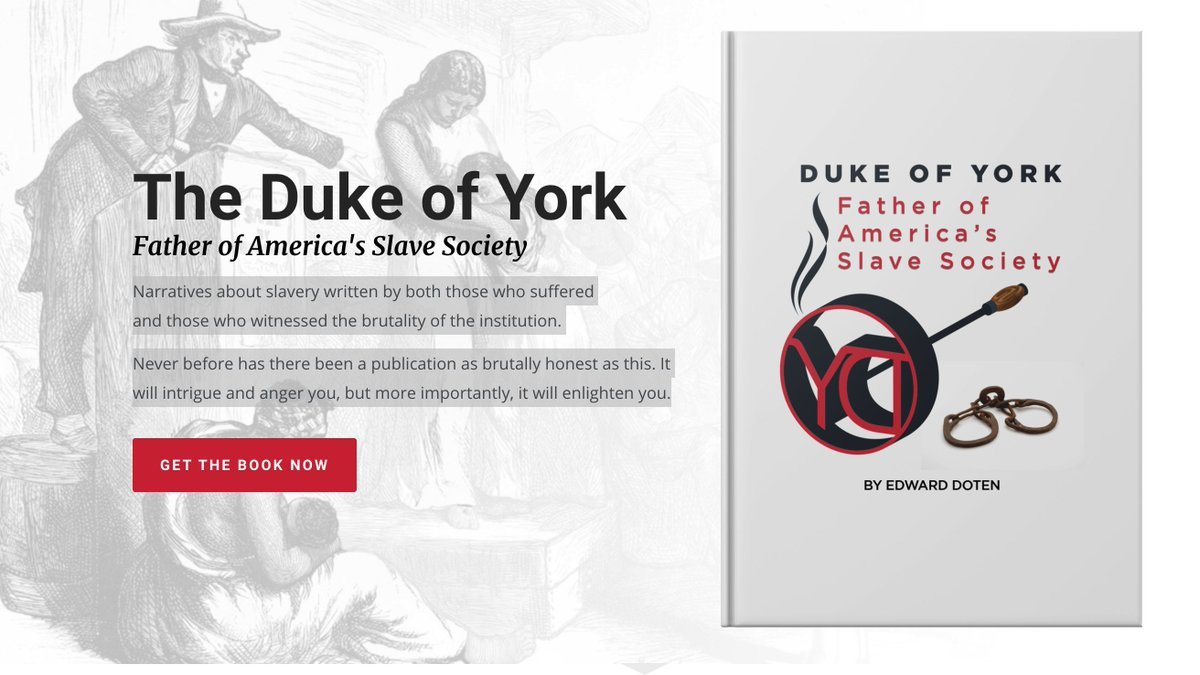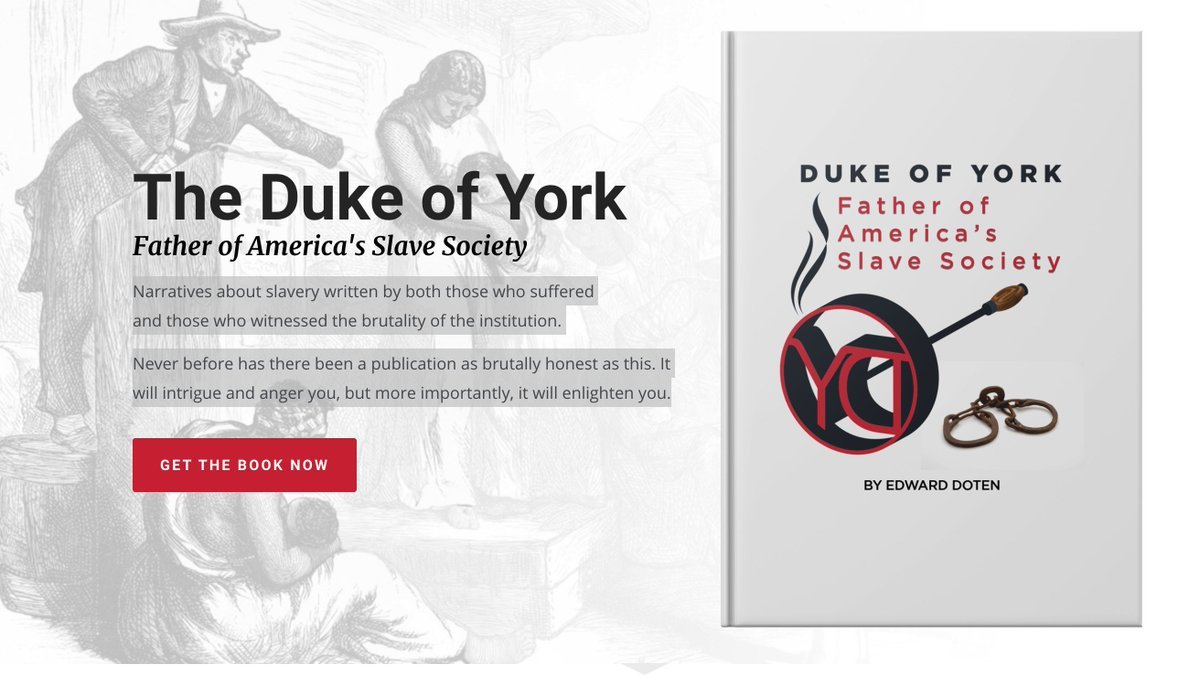1/27 As I have conducted my research about American slavery, I was shocked by aspects of slavery. Certainly, among them is burning slaves at the stake (not to mention breaking slaves on the wheel and gibbeting them—handing them up in cages to die or after death). 

2/27 Other shocking aspects of slavery include the practice of whipping slaves dozens, and even hundreds, of times and the practice of posting rebellious slaves’ heads along public roads to terrorize other slaves. More than any other, I would point to coffles. 

3/27 I had difficulty accepting that coffles actually were a practice, but as it turns out not only were they a practice, but a common one. There is abundant evidence of it in academic books that never see the inside of school rooms or enter into polite white societal discussion 

4/27 Briefly, coffles were gangs of up to hundreds of slaves, including children, chained together and marched under the whip long distances, with or without shoes, adequate clothing, in all types of weather. 

5/27 Lexico.com defines the term “coffle” as “A line of animals or slaves fastened or driven along together.” My schools never mentioned coffles, and although I am in my late 70s, I did not know of them until I began my research. 

6/27 The slaves in a coffle were separated from family members, whom they would never see again. This was part of the forced migration of over a million slaves from Carolina lowlands and Upper South (where tobacco had lost its marketability) to the booming cotton South. 

7/27 It was common for such large-scale coffles to be organized in Washington, DC (and neighboring Alexandria, VA) to be marched on foot like cattle to the slave auctions in New Orleans, a thousand miles away. Sound incredible? It did to me. 

8/27 If you think about it, you will realize that these coffles traveled through town after town, state after state, in full view of tens of thousands of people who simply accepted coffles as part of everyday life. Slaves in coffles marched across mountains, rivers, rocky roads. 

9/27 In the next few tweets, I will provide testimony from Theodore Weld’s book, American Slavery As It Is, an influential abolitionist book at the time of slavery. Images are from slaveryimages.org. 

10/27 Testimony in Weld’s book: “About five years ago, I remember to have passed in a single day four droves of slaves for the south west; the largest drove had 350 slaves in it, and the smallest upwards of 200, I counted 68 or 70 in a single coffle.” 

11/27 “The ‘coffle chain’ is a chain fastened at one end to the centre of the bar of a pair of hand cuffs, which are fastened to the right wrist of one, and the left wrist of another slave, they standing abreast, and the chain between them. These are the head of the coffle.” 

12/27 “The other end [of the coffle chain] is passed through a ring in the bolt of the next handcuffs, and the slaves being manacled thus, two and two together, walk up, and the coffle chain is passed, and they go up towards the head of the coffle.” 

13/27 “Of course they are closer or wider apart in the coffle, according to the number to be coffled, and to the length of the chain. I have seen hundreds of droves & chain-coffles of this description, & every coffle was a scene of misery and wo, of tears & brokenness of heart.” 

14/27 Weld: “On the beautiful avenue in front of the Capitol, members of Congress have been compelled to turn aside from their path, to permit a coffle of slaves, males and females, chained to each other by their necks, to pass on their way to this national slave market.” 

15/27 Weld’s book: “The Western Luminary, a religious paper published at Lexington, Kentucky, in an editorial article, in the summer of 1833, says:” 

16/27 “A few weeks since we gave an account of a company of men, women and children, part of whom were manacled, passing through our streets.” 

17/27 “Last week, a number of slaves were driven through the main street of our city, among whom were a number manacled together, two abreast, all connected by, and supporting a heavy iron chain, which extended the whole length of the line.” 

18/27 Weld’s book: “Mr. George P.C. Hussey, of Fayetteville, Franklin county, Pennsylvania, writes thus:” 

19/27 “I was born and raised in Hagerstown, Washington county, Maryland, where slavery is perhaps milder than in any other part of the slave states; and yet I have seen hundreds of colored men and women chained together, two by two, and driven to the south.” 

21/27 In an article for the Smithsonian, Edward Ball provides the following description of some members of one coffle from its records. 

22/27 “Bill Keeling, male, age 11, height 4’5” | Elisabeth, female, age 10, height 4’1” | Monroe, male, age 12, height 4’7” | Lovey, female, age 10, height 3’10” | Robert, male, age 12, height 4’4” | Mary Fitchett, female, age 11, height 4’11” 

23/27 Ball also describes the New Orleans auctions at the end of the march: “At the auction, “They were sorted by sex and size and made to stand in sequence. Men on one side, in order of height and weight, women on the other.” 

24/27 “A typical display placed an 8-year-old girl on the left end of a line… This sorting arrangement meant that it was more likely children would be sold from their parents.” 

25/27 “‘On the block was one of the most beautiful young women I ever saw. She was about sixteen, dressed in a cheap striped woolen gown, and bareheaded.’” 

26/27 “Her name was Hermina. ‘She was sold for $1250 to one of the most lecherous-looking old brutes I ever set eyes on,’ the reporter noted. That is the equivalent of $35,000 today.” 

27/27 This is among the information that my schools withheld from me, even in colleges. This is information that state officials and public school districts seek to hide, to sanitize “because it might make some people feel uncomfortable.” 

Thank you for your RT, Momathena! It is an important way to communicate the truth about slavery in a manner that state officials cannot censor. @EdwardDoten
Thank you for your RT, CornRan! It is an important way to communicate the truth about slavery in a manner that state officials cannot censor. @EdwardDoten
Thank you for your RTs! They are an excellent way to communicate the truth about slavery to the public in a manner that state officials cannot censor. @EdwardDoten
Thank you for your RTs! They are an excellent way to communicate the truth about slavery to the public in a manner that state officials cannot censor. @EdwardDoten
Thank you, ContraBand, for your RT to spread the message! Much appreciated. @EdwardDoten
Thank you for your RTs to spread the message! I appreciate it very much. It communicates the true horrors of slavery to the public in a way state officials can’t censor. @EdwardDoten
• • •
Missing some Tweet in this thread? You can try to
force a refresh























